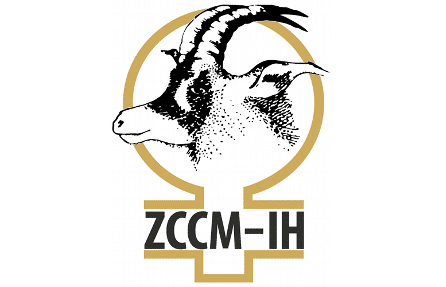
The mining company has since taking over the unit pledged to cut down the emissions from the smelter a gas which will now be converted into production of acid which the company seeks to maximize in its production unlike releasing to the atmosphere.
The completion of the upgrade programme means that the smelter will now be able to capture 97 percent of the sulphur dioxide emitted to the atmosphere in conformity with the rules under the World Health Organisation (WHO).
Company Chief Executive Officer Danny Callow said in a statement to the mining News Zambia that the smelter had been completed 15 months ahead of schedule. The smelter was done in three phases to address the sulphur dioxide emissions which were at 100 per cent from 1937 to Glencore’s investment in 2000 since the company took over operations.
Mopani Copper Mines, he added was committed to upgrading the smelter to comply with international standards just after the acquisition of the asset in 2000. The company has to date invested over US$2 billion in rebuilding the mine, much of which is underground operated to meet the international mining and latest standards to maximize on its production of copper and cobalt.
At the time of acquisition, Callow stated, the Mufulira smelter was emitting 100 per cent of its sulphur dioxide emissions into the atmosphere. A decision was made to build a new smelter within the confines of the existing smelter, whilst increasing production and maintaining job stability, which were two key areas of government focus.
“One option we had involved closing the processing plant, which would have enabled us to complete the work earlier but would have resulted in around 900 job losses at the time, with a major impact on the local economy, which is heavily reliant on the operation.
“The second and more viable option was to keep the plant operational and upgrade the smelter in stages,” Callow stated and described the upgrade project as one of the biggest environmental projects ever undertaken in Zambia.
The first phase of the project was completed in 2007, which involved replacing the existing electric furnace and construction of an acid plant at a cost of US$ 213m, enabling the capture of emissions of 50 per cent. In the second phase, two new bigger anode furnaces and twin anode casting wheels were installed at a value of US$81million and were successfully commissioned in 2009.
“With the completion of phases one and two, the smelter capacity improved to about 625,000 tpa concentrate treatment from 420,000 tpa, whilst sulphur capture improved to 51 per cent. In the third and final phase which involved the installation of three larger converters, assorted gas handling equipment and a second acid plant, all costing US$206 million, was completed in March this year, 15 months ahead of schedule agreed with the Zambian government,” Callow added.
It is envisaged that the completion of the Mufulira smelter upgrade project would result in a greatly improved environment for the local community and Mopani employees.
There have been concerns from various stakeholders, civil rights campaigners over the emissions of sulphur dioxide at the mines with some of the residents, especially those living in areas closest to the mines like in Butondo, Kankoyo and Sections eight, F, E,D, C as being victims of the emissions.
They argued recently that the emissions and other mining blasting activities were affecting their livelihood as they were subjected to harsh and chocking fumes while their houses had developed cracks as a result and some, were even demanding compensation from the mining company over their respiratory problems arising from the fumes, commonly referred to as “Centa”, a Boer word meaning strong chocking fumes arising from untreated acid.
Last year, residents of Mufulira’s Kankoyo township, which was heavily affected by the emissions, had staged protests against the health risk sulphur dioxide emissions from Mopani’s Copper Mines-Mufulira smelter has been posing on many people, including children. They claimed they were suffering from serious respiratory infections due to pollution from the mine, although no notable deaths have been recorded to date.
THE Southern Africa Resource Watch (SARW), one of the civil right campaigners had recently argued that the emissions needed to be redressed to save people, animal and enivoronmental effects that characterized Mufulira townships especially those living near the mining areas. SARW, after assessing the recent efforts made by Mopani Copper Mines said it is now satisfied with efforts to mitigate the impact of sulphur dioxide emissions in Mufulira district.
SARW campaign officer for Zambia, Edward Lange said the organisation undertook a survey to observe the situation on a balanced basis, monitoring MCM readings from their community air monitors stationed at some health centres dotted around the district for the past 20 days, adding that the independent assessment showed that there had been drastic improvement on the quality of air in areas like Kankoyo township.
“It was important to note that sulphur dioxide emissions popularly known as ‘senta’ among the locals, was a legacy issue, which had been a challenge in Mufulira since 1937 and efforts by agencies and Mopani Copper Mines that had massively invested in projects aimed at improving the air quality must be commended”.
In the case of Kankoyo and Kantanshi residents, the problem had persisted for over 80 years. It was then that the company decided to redress the historical problem hence the modernisation of the smelter through the smelter upgrade project. Mopani proved its commitment to a clean and safe environment by investing approximately US $450 million to end the historical problem of sulphur dioxide emissions.
Source: Mining News Zambia
